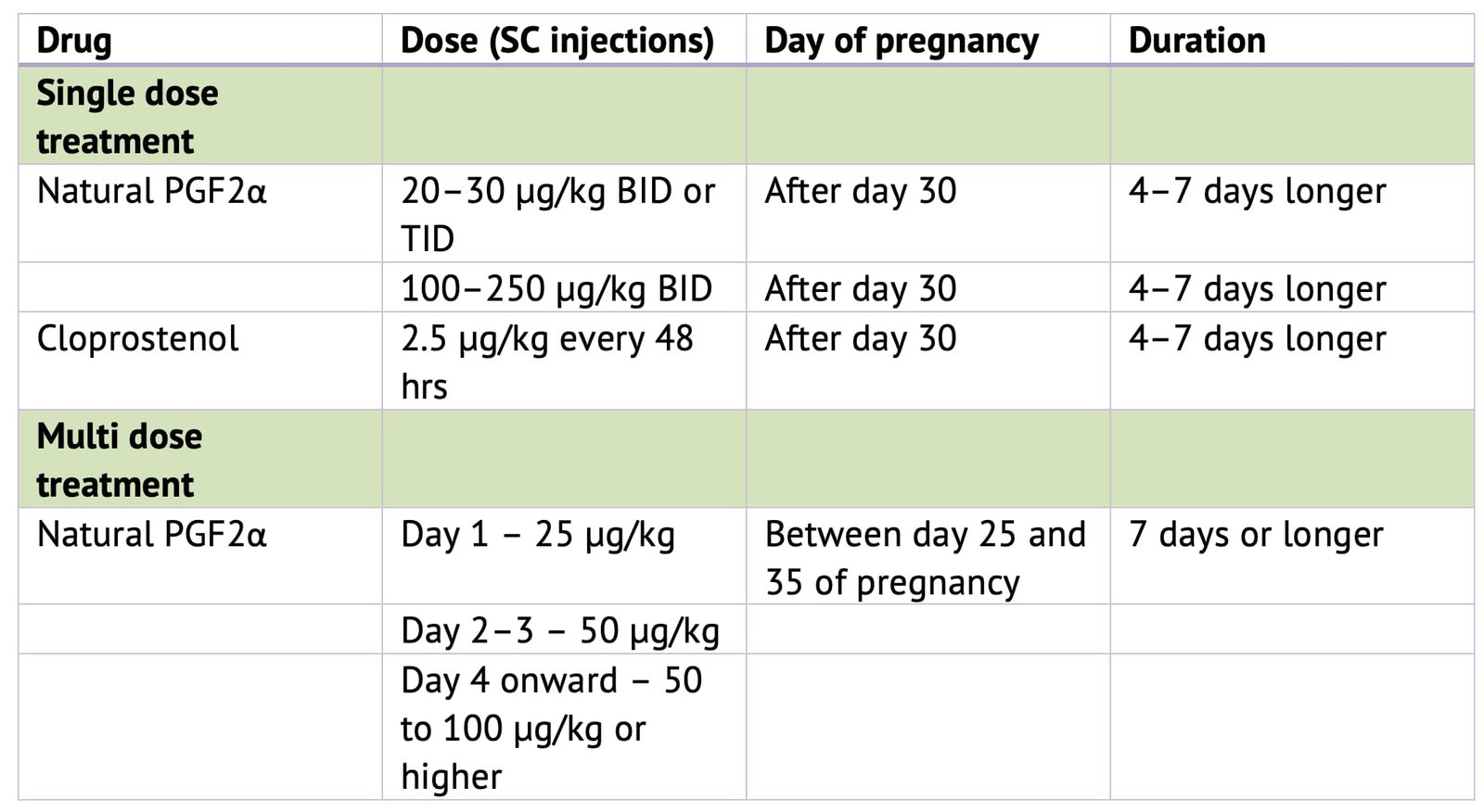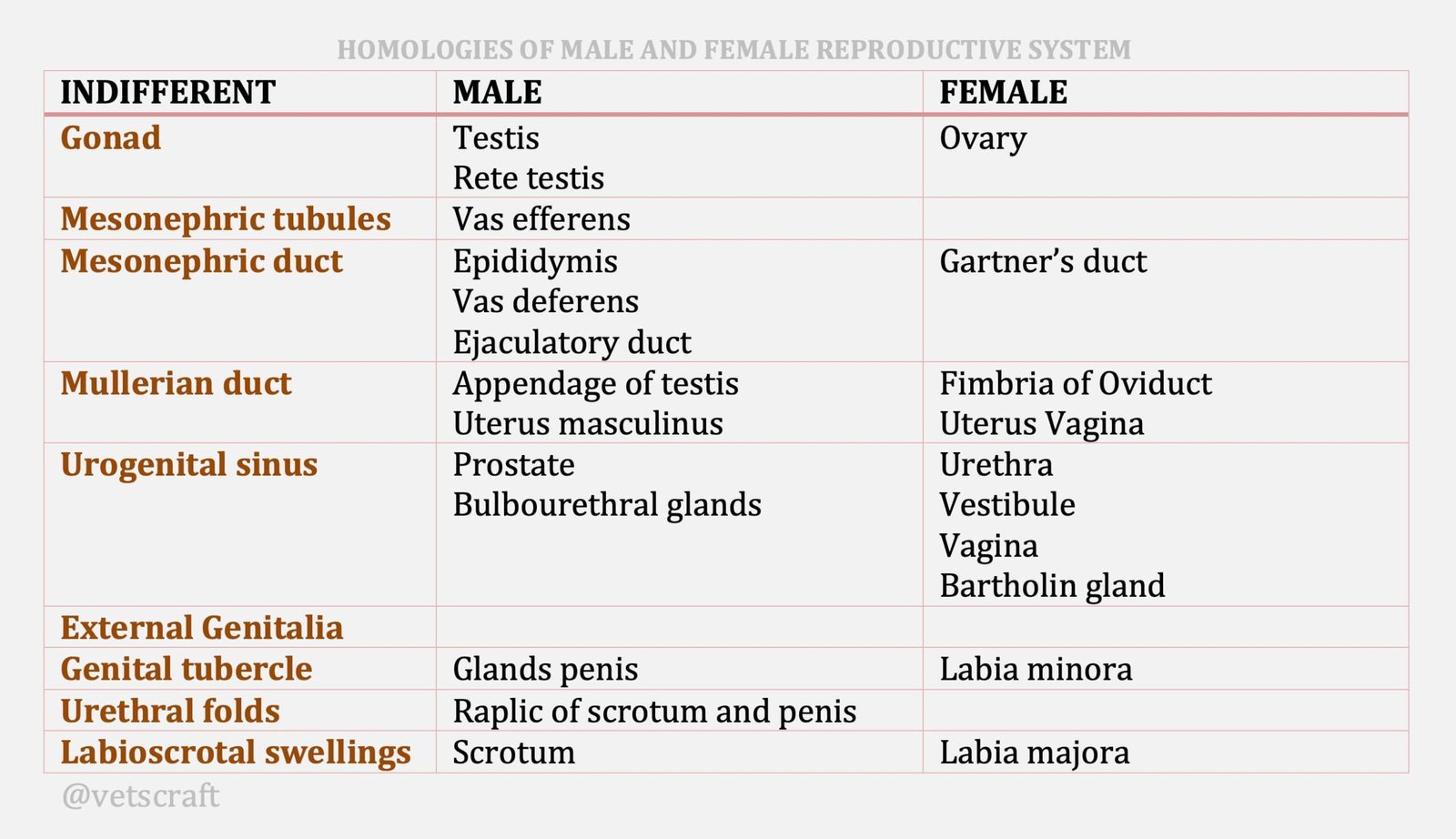TABLE OF CONTENTS
Management Mismating in Dogs
Mismating in dogs also known as accidental or unwanted mating, refers to unintended copulation between a bitch and a male dog, which potentially result in an unplanned pregnancy.
Unwanted pregnancies frequently occur in the bitch and veterinarians may be asked by owners to terminate pregnancies early in gestation in an effort to avoid all the potential difficulties encountered with a pregnant bitch or an unwanted litter of puppies.
Ovariohysterectomy is the treatment of choice for the mismated bitch that is not intended for breeding. This procedure permanently eliminates chances of an unwanted pregnancy. It is safe and inexpensive and relieves any chance of reproductive problems in the future.
Methods
Abortion induction methods involve:
- Modification of estrogen progesterone ratio by administration of estrogen/synthetic estrogen derivatives / glucocorticoids.
- Induction of functional luteal arrest or luteolysis by substances that act directly (prostaglandins) or indirectly on the CL by inhibiting luteotrophic support. For eg. dopamine agonists suppress prolactin secretion whereas GnRH antagonists deplete LH.
- Blockage of progesterone secretion by inhibiting steroidogenesis (epostane).
- Blockage of progesterone action at the receptor levels (anti progesterone (mifipristone / algepristone).
Abortion Induction Before Implantation
Estrogens, administered at the correct dose and time after an unwanted breeding, tighten the uterotubular junction, prolong oviductal retention of embryos and prevent migration of the developing embryo into the uterus, thereby ending pregnancy.
Estradiol valerate @ 3.0 to 7.0 mg administered once 4 to 10 days after mismating.
Estradiol benzoate @ 5 to 20 µg/kg with maximum of 1 mg/dog every other day for total of 3 injections beginning 2 to 4 days after mismating.
However estrogen therapy is not recommended due to increased risk of pyometra, potential for bone marrow disruption and prolongation of estrous behavior.
Abortion Induction after Implantation
Prostaglandins
Canine corpora lutea may be relatively resistant to the luteolytic effects of prostaglandins during the first 14 to 28 days of pregnancy. Resistance after this time is still present, but to a lesser degree. Hence treatment is recommended at approximately 30 days after breeding.
- to 0.25 mg/kg of natural PGF2α SC BID for minimum of 5 days and until all fetuses are expelled.
- to 0.04 mg/kg of prostaglandin analogues SC as a single dose. To be considered a candidate for prostaglandin termination of pregnancy, bitches must be healthy and less than 7 years of age. Side effects are as mentioned for pyometra.

Dopamine Agonist
Prolactin is the major luteotropic hormone throughout the luteal phase in both pregnant and non pregnant bitches which means the progesterone production from corpora lutea is prolactin dependent.
Bromocriptine
Bromocriptine @ 0.1 mg/kg BID orally for minimum of 8 days beginning on day 35 of gestation and until all fetuses are expelled. Bromocriptine stimulates dopamine secretion, indirectly suppressing the synthesis and secretion of prolactin.
As proclactin is required for maintenance of the corpus luteum in the dog in mid to late gestation, its suppression with bromocriptine terminates pregnancy. Side effects are inappetence and / or anorexia, vomiting and depression which are more severe and persistenct than those observed for prostaglandins.
Cabergoline
Cabergoline, a prolactin antagonist is highly effective @ 5 µg/kg, orally once daily for 5 days starting from 40 days LH surge. These side effects are less when compared to bromocriptine.
A combination therapy of oral cabergoline at 5 µg/kg per day and low dose of cloprostenol (PGF2α analogues) injection of 1 µg/kg SC every other day for upto 9 days terminated pregnancy in dogs when administered starting around day 28 of pregnancy.
Antiprogestin
Antiprogestins are synthetic steroids which bind with great affinity to progesterone receptors thereby preventing progesterone induced changes in DNA transcription. As a result, the effects of progesterone are not there.
Mifepristone (RU486) is one such antiprogesterone which induced direct luteolysis. In pregnant bitches, Mifepristone was found to be effective if administered after day 32 of gestation @ 2.5 mg/kg orally twice daily for 4.5 days. Pregnancy was terminated without any side effects within 3 to 6 days after treatment.
A combination of low doses of prostaglandin E such as misoprostol and mifepristone is currently being used to improve the action of mifepristone.
Another analog of RU-486, Aglepristone (RU-534) can be used to prevent pregnancy when administered as two injections SC of 10 mg/kg 24 hrs apart. This drug is found to have an efficacy of 97.3% and does not cause any side effects.
Corticosteriods
Glucocorticoids @ 5 mg/kg every 12 hrs for 10 days after 30 days of gestation. Currently, the use of glucocorticoids to terminate pregnancy is not recommended because of their immunosuppressive effects and because abortions, when they occur, are less predictable than with other drugs mentioned above.
Injectable Dexamethasone (5 mg twice daily IM for 10 days) and oral Dexamethasone (0.1 to 0.2 mg twice daily at a decreasing dose for 5 to 10 days).
Dose schedule for Dexamethasone (µg/kg) used in a 9.5 day protocol of twice daily oral dexamethasone administration for termination of canine pregnancy.

Side effects like polydipsia and polyurea were observed shortly after start of treatment and persisted for a few days after end of treatment.
Epostane
Epostane is a steroid molecule that inhibits steroid synthesis at the level of the hydroxy steroid – dehydrogenase – isomerase enzyme system, thereby inhibiting the formation of progesterone from pregnanolone. Epostane terminates pregnancy when given orally at 2.5 to 5 mg/kg for 7 days starting any time after diestrus begins. No adverse side effects have been observed upto 10 mg/kg; but at higher doses sterile abscess may form at the site of injection.
GnRH Antagonists
GnRH antagonists are effective after day 20 of diestrus and act by decreasing concentration of circulating gonadotropins causing luteolysis, decline in serum progesterone concentrations, and subsequent pregnancy loss. But, currently this preparation is not available in clinical practice.


